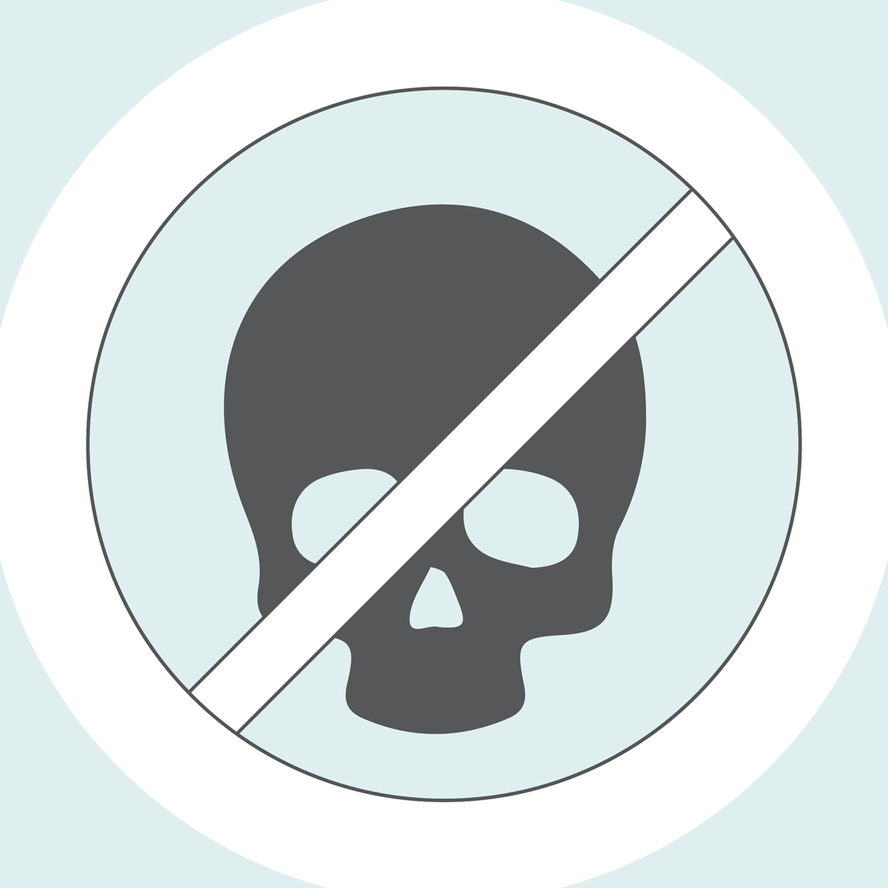Phthalates are found in products most of us come in contact with on a daily basis. They’re found in personal care products, food and beverage containers, detergents, pharmaceuticals, lubricant oils, vinyl flooring, wall coverings, and even children’s toys. While it may be difficult to avoid phthalates entirely, it helps to be informed on what they are and about their potential dangers.
What Are Phthalates?

Phthalates are one of the most commonly used chemicals in the world. Each year in the United States, over one billion pounds of phthalates are released. These colorless, odorless, oily liquids are most commonly used as “plasticizers”, which are synthetic ingredients used to soften plastics that would otherwise crack and be breakable.
Phthalates enter the body through ingestion, inhalation, and skin absorption. They do not chemically bind to substances they are added to and they do not evaporate easily. They can be released from a product in any stage of the product life cycle, from production, product use, and disposal. They are set off by heat, prolonged storage, absorption, and product disturbances. Phthalates can interact with one another, which increases the harmful effect of their exposure.
How Do Phthalates Affect Me?
![]()
According to The U.S. Food and Drug Administration (FDA) it is not clear what effect, if any, phthalates have on health. However, the European Union (EU), and Canada have strict regulations on the use of this ingredient. Some consumer advocacy, environmental, and medical experts in the U.S. suggest phthalates may be linked to numerous harmful effects on humans like disrupting hormone activity. They can interact with one another, which increases the harmful effect of their exposure.
Phthalates and Hair

Phthalates are used as gelling agents in some shampoos. They are also found in mousses, hairsprays and conditioners. They help lubricate and soften other substances, increase spreadability, enhance absorption, and help to make fragrances last longer. Under current law, manufacturers don’t have to list phthalates on product labels. Any item simply listed as “fragrance” in hair care products, usually contains phthalates. The FDA hasn’t taken any measures to reduce the use of phthalates in personal care products, despite significant evidence showing the potential dangers of exposure.
In animal testing, some phthalates caused malformations and permanent damage of the male reproductive system. These are the same phthalates that are currently sold in hair care products in some of the biggest brand names on the market. The only way to avoid exposure to phthalates is by carefully reading product labels. When buying hair care products, stick with companies who have pledged to remain phthalate free. Briogeo’s entire collection is completely free of phthalates.
What Are Phthalates Called On Ingredient Panels?

Beware of the following ingredient names that indicate the product contains phthalates.
- DCP (dibutyl phthalates)
- DMP (dimethyl phthalate)
- DEP (diethyl phthalate)
- DEHP (Di(2-ethylhexyl)phthalate)
- BzBP (benzylbutyl phthalate)
- DBP (dibutyl phthalate)
- DNOP (di-n-octyl phthalate)
- DiNP (diisononyl phthalate)
- DiDP (diisodecyl phthalate)
- DnHP (di-n-hexyl phthalate)
What are side effects can phthalates cause?
- Premature birth
- Low birth weight
- Infertility in men and women
- Asthma
- Worsening of allergy symptoms
- Obesity
- Early onset of puberty
- Insulin resistance in adolescence
- Behavioral changes
- Interfering with the natural functioning of the hormone system
- Lower testosterone in men
- Possible risk increasers of breast and liver cancer
Understanding the possible risks of phthalates should help you be better informed on what you could potentially be exposing your body to. Here at Briogeo, we stand for clean and conscious products. Click here to find out more about what we include and what we exclude in our hair care collections.


